- Home
- William C. Dietz
Halo. Flood
Halo. Flood Read online
HALO® THE FLOOD
NOVELS IN THE NEW YORK TIMES BESTSELLING HALO® SERIES
Halo®: The Fall of Reach by Eric Nylund
Halo®: The Flood by William C. Dietz
Halo®: First Strike by Eric Nylund
Halo®: Ghosts of Onyx by Eric Nylund
Halo®: Contact Harvest by Joseph Staten
Halo®: The Cole Protocol by Tobias S. Buckell
Halo®: Evolutions by Various Authors
HALO® THE FLOOD
WILLIAM C. DIETZ
A TOM DOHERTY ASSOCIATES BOOK
NEW YORK
The author and publisher have provided this e-book to you without Digital Rights Management software (DRM) applied so that you can enjoy reading it on your personal devices. This e-book is for your personal use only. You may not print or post this e-book, or make this e-book publicly available in any way. You may not copy, reproduce or upload this e-book, other than to read it on one of your personal devices.
Copyright infringement is against the law. If you believe the copy of this e-book you are reading infringes on the author’s copyright, please notify the publisher at: us.macmillanusa.com/piracy.
Table of Contents
Title
Copyright
Dedication
Acknowledgments to the 2010 Edition
Foreword
Prologue
Section I: Pillar of Autumn
Chapter One
Section II: Halo
Chapter Two
Chapter Three
Chapter Four
Section III: The Silent Cartographer
Chapter Five
Chapter Six
Chapter Seven
Section IV: 343 Guilty Spark
Chapter Eight
Chapter Nine
Section V: Two Betrayals
Chapter Ten
Chapter Eleven
Section VI: The Maw
Chapter Twelve
Adjunct
This is a work of fiction. All of the characters, organizations, and events portrayed in this novel are either products of the author’s imagination or are used fictitiously.
HALO®: THE FLOOD
Copyright © 2003, 2010 by Microsoft Corporation
Originally published by Del Rey, The Random House Publishing Group
All rights reserved.
Microsoft, Halo, the Halo logo, Xbox, and the Xbox logo are trademarks of the Microsoft group of companies.
A Tor Book
Published by Tom Doherty Associates, LLC
175 Fifth Avenue
New York, NY 10010
www.tor-forge.com
Tor® is a registered trademark of Tom Doherty Associates, LLC.
ISBN 978-0-7653-2833-5
First Tor Trade Paperback Edition: October 2010
Printed in the United States of America
0 9 8 7 6 5 4 3 2 1
For Marjorie, with love and gratitude
ACKNOWLEDGMENTS TO THE 2010 EDITION
None of this would have been possible without Microsoft staffers Jacob Benton, Nicolas “Sparth” Bouvier, Alicia Brattin, Gabriel “Robogabo” Garza, Jon Goff, Kevin Grace, Tyler Jeffers, Frank O’Connor, Jeremy Patenaude, Kenneth Scott, and Kiki Wolfkill.
Nor without the efforts of the staff at Tor Books: Tom Doherty, Eric Raab, Whitney Ross, Seth Lerner, Megan Barnard, Teresa DeLucci, Jim Kapp, Lauren Hougen, Heather Saunders, Nathan Weaver, Justin Golenbock, and Patty Garcia.
343 Industries would like to thank Bungie Studios, Scott Dell’Osso, Nick Dimitrov, David Figatner, Nancy Figatner, Josh Kerwin, Bryan Koski, William C. Dietz, Bonnie Ross-Ziegler, Phil Spencer, and Carla Woo.
FOREWORD
If, by some chance, you’re not familiar with the story in these pages, then skip this foreword and move on to the main course. You’ve been warned.
The Flood. It’s the third-act twist. It’s the creeping horror. It’s the boogeyman that lurks in dark Forerunner corners. It’s a compelling and unexpected bad guy. It’s an ancient shame. It’s a forgotten sin. And in some ways, it’s the icky, sticky glue that holds the Halo universe together.
The Flood is also the first and only Halo novel that’s actually based on a game. We enjoy the luxury of an expanded universe that gives us permission to go off on highly exploratory adventures. We can visit distant worlds, move back and forward through an immense chronology, and flit from place to place like a butterfly. But The Flood is centered squarely in the vents of the first game—and is unique for that.
Certainly for gamers, it has a mixed reception. Some players enjoy the perverse nightmare of slogging through the Library on Legendary, blasting through putrescent forms with a shotgun and an ever-diminishing ammo supply. Others go into shock at the mere mention of that challenge, wishing for daylight and the bright vistas and the relief of Halo’s friendlier climes.
But Bill Dietz, who performed yet another herculean task in the Halo canon, was able to take a narrative structure from a nascent game universe and turn it into compelling fiction and adventure, often by taking the same detours that we, in Halo fiction, are often tempted by.
Dietz explores a lot of the stuff that was simply inferred during the game. He unravels some mysteries that were never explicitly explained. And he has fun in the corridors and confines of Installation 04, taking us on an underground tour of a place we thought we were familiar with, but that continually surprises us with its alien enigma.
In hindsight, knowing what we know about the Gravemind, the long-ago Forerunner war with the Flood and the very purpose of the Halo array, Dietz’s compelling vision of the events of Halo: Combat Evolved takes on a fresh new resonance and holds surprises still, even for the cognoscenti. Enjoy it, and enjoy the other little surprises we’ve scattered among these pages.
Frank O’Connor
Redmond, Washington
July 2010
HALO® THE FLOOD
PROLOGUE
0103 HOURS, SEPTEMBER 19, 2552 (MILITARY CALENDAR) / UNSC CRUISER PILLAR OF AUTUMN, LOCATION UNKNOWN.
Tech Officer (3rd Class) Sam Marcus swore as the intercom roused him from fitful sleep. He rubbed his blurry eyes and glanced at the Mission Clock bolted to the wall above his bunk. He’d been asleep for three hours—his first sleep cycle in thirty-six hours, damn it. Worse, this was the first time since the ship had jumped that he’d been able to fall asleep at all.
“Jesus,” he muttered, “this better be good.”
The Old Man had put the tech crews on triple shifts after the Pillar of Autumn jumped away from Reach. The ship was a mess after the battle, and what was left of the engineering crews worked around the clock to keep the aging cruiser in one piece. Nearly one third of the tech staff had died during the flight from Reach, and every department was running a skeleton crew.
Everyone else went into the freezer, of course—nonessential personnel always got an ice-nap during a Slipspace jump. In over two hundred combat cruises, Marcus had clocked fewer than seventy-two hours in cryostorage. Right now, though, he was so tired that even the discomfort of cryorevival sounded appealing if it meant that he could manage some uninterrupted sleep.
Of course, it was difficult to complain; Captain Keyes was a brilliant tactician—and everyone aboard the Autumn knew just how close they’d come to destruction when Reach fell to the enemy. A major naval base destroyed, millions dead or dying as the Covenant burned the planet to a cinder—and one of Earth’s few remaining defenses transformed into corpses and molten slag.
All in all, they’d been damned lucky to get away—but Sam couldn’t help but feel that everyone on the Autumn was living on borrowed time.
The intercom buzzed again, and Sam swung himself out of the bunk. He jabbed at the comm co
ntrol. “Marcus here,” he growled.
“I’m sorry to wake you, Sam, but I need you down in Cryo Two.” Tech Chief Shephard sounded exhausted. “It’s important.”
“Cryo Two?” Sam repeated, puzzled. “What’s the emergency, Thom? I’m not a cryo specialist.”
“I can’t give you specifics, Sam. The Captain wants it kept off the comm,” Shephard replied, his voice almost a whisper. “Just in case we have eavesdroppers.”
Sam winced at the tone in his superior’s voice. He’d known Thom Shephard since the Academy and had never heard the man sound so grim.
“Look,” Shephard said, “I need someone I can depend on. Like it or not, that’s you, pal. You’ve cross-checked on cryo systems.”
Sam sighed. “Months ago . . . but yes.”
“I’m sending a feed to your terminal, Sam,” Shephard continued. “It’ll answer some of your questions anyway. Dump it to a portable ’pad, grab your gear and get down here.”
“Roger,” Sam said. He stood, shrugged into his uniform tunic, and stepped over to his terminal. He activated the computer and waited for the upload from Shephard.
As he waited, his eyes locked on a small 2-D photograph taped to the edge of the screen. Sam brushed his fingers against the photo. The pretty young woman frozen in the picture smiled back at him.
The terminal chimed as the feed from Shephard appeared in Sam’s message queue. “Receiving the feed, Chief,” he called out to the intercom pickup.
He opened the file. A frown creased his tired features as a new message scrolled across his screen.
>FILE ENCRYPTED/EYES ONLY/MARCUS, SAMUEL N./SN:18827318209-M.
>DECRYPTION KEY: [PERSONALIZED: “ELLEN’S ANNIVERSARY”]
He glanced back at the picture of his wife. He hadn’t seen Ellen in almost three years—since his last shore leave on Earth, in fact. He didn’t know anyone on active duty who’d been able to see their loved ones for years. The war simply didn’t allow for it.
Sam’s frown deepened. UNSC personnel generally avoided talking about the people back home. The war had been going badly for so long that morale was rock-bottom. Thinking about the home front only made things worse. The fact that Thom had personalized the security encoding was unusual enough; reminding Sam of his wife in the process was completely out of character for Chief Shephard. Someone was being security-conscious to the point of paranoia.
He punched in a series of numbers—the date of his wedding—and enabled the decryption suite. In seconds, the screen filled with schematics and tech readouts. His practiced eye scanned the file—and adrenaline suddenly spiked through his fatigue like a bolt of lightning.
“Christ,” he said, his voice suddenly hoarse. “Thom, is this what . . . who I think it is?”
“Damn right. Get down to Cryo Two on the double, Sam. We’ve got an important package to thaw out—and we drop back into real space soon.”
“On my way,” he said. He killed the intercom connection, his exhaustion forgotten.
Sam quickly dumped the tech file to his portable compad and deleted the original from his computer. He strode toward the door to his cabin, then stopped. He snatched Ellen’s picture from the workstation—almost as an afterthought—and shoved it into his pocket.
He sprinted for the lift. If the Captain wanted the inhabitant of Cryo Two revived, it meant that Keyes believed that the situation was about to go from bad to worse . . . or it already had.
Unlike vessels designed by humans—in which the command area was almost always located toward the ship’s bow—Covenant ships were constructed in a more logical fashion, which meant that their control rooms were buried deep within heavily armored hulls, making them impervious to anything less than a mortal blow.
The differences did not end there. Rather than surround themselves with all manner of control interfaces, plus the lesser beings required to staff them, the Elites preferred to command from the center of an ascetically barren platform held in place by a latticework of opposing gravity beams.
However, none of these things were at the forefront of Ship Master Orna ‘Fulsamee’s mind as he stood at the center of his destroyer’s control room and stared at the data projections which appeared to float in front of him. One showed the ringworld, Halo. Near that, a tiny arrow tracked the interloper’s course. The second projection displayed a schematic titled HUMAN ATTACK SHIP, TYPE C-II. A third scrolled a constant flow of targeting data and sensor readouts.
He fought a moment of revulsion. That these filthy primates somehow merited an actual name—let alone names for their inferior constructs—galled him to his core. It was perverse. Names implied legitimacy, and the vermin deserved only extermination.
The humans had “names” for his own kind—“Elites”—as well as the lesser races of the Covenant: “Jackals,” “Grunts,” “Hunters.” The appalling temerity of the filthy creatures, that they would dare name his people with their harsh, barbaric tongue, was beyond the pale.
He paused, and regained his composure. ‘Fulsamee clicked his lower mandibles—the equivalent of a shrug—and mentally recited one of the True Sayings. Such is the Prophets’ decree, he thought. One didn’t question such things, even when one was a Ship Master. The Prophets had assigned names to the enemy craft, and he would honor their decrees. Any less was a disgraceful dereliction of duty.
Like all of his kind, the Covenant officer appeared to be larger than he actually was, due to the armor that he wore. It gave him an angular, somewhat hunched appearance which, when combined with a heavy, pugnacious jaw, caused him to look like what he was: a very dangerous warrior.
The being who floated next to ‘Fulsamee bobbed slightly as a gust of air nudged his heavily swathed body. He wore a tall, ornate headpiece made of metal and set with amber panels. The Prophet had a serpentine neck, a triangular skull, and two bright green eyes which glittered with malevolent intelligence. He wore a red overrobe, a gold underrobe, and beneath the fabric, an anti-grav throne which served to keep him suspended one full unit off the deck. Though only a Minor Prophet, he still outranked ‘Fulsamee, as his bearing made clear.
True Sayings aside, the Ship Master couldn’t help but be reminded of the tiny, squealing rodents he had hunted in his childhood. He immediately banished the memory of blood on his claws and returned his attention to the Prophet, and his tiresome assistant.
The assistant, a lower-rank Elite named Bako ‘Ikaporamee, stepped forward to speak on the Prophet’s behalf. He had an annoying tendency to use the royal “we,” a habit that angered ‘Fulsamee.
Even his demeanor dripped with condescension, a fact which made the Ship Master angry, but couldn’t be addressed. Not directly, and certainly not with the Prophet present, although ‘Fulsamee wasn’t willing to cave in completely. “So,” ‘Fulsamee said, careful to direct his comment to ‘Ikaporamee alone, “you would have me believe that the interlopers arrived here entirely by chance?”
“No, of course not,” ‘Ikaporamee replied loftily. “Though primitive by our standards, the creatures are sentient, and like all sentient beings, they are unconsciously drawn to the glory of the ancients’ truth and knowledge.”
Like all the members of his caste, ‘Fulsamee knew that the Prophets had evolved on a planet which the mysterious truth-givers had previously inhabited, and then, for reasons known only to the ancients themselves, subsequently abandoned. This ringworld was an excellent example of the ancients’ power . . . and inscrutability.
‘Fulsamee found it hard to believe that mere humans would be drawn here, the ancients’ wisdom notwithstanding, but ‘Ikaporamee spoke for the Prophet, so it must be true. ‘Fulsamee touched the light panel in front of him. A symbol glowed red. “Prepare to fire plasma torpedoes. Launch on my command.”
‘Ikaporamee raised both hands in alarm. “No! We forbid it. The human vessel is much too close to the construct! What if your weapons were to damage the holy relic? Pursue the ship, board it, and seize control. Anything else is far too danger
ous.”
Angered by what he saw as ‘Ikaporamee’s interference, ‘Fulsamee spoke through gritted teeth. “The course of action that the holy one recommends is likely to result in a high number of casualties. Is this acceptable?”
“The opportunity to transcend the physical is a gift to be sought after,” the other responded. “The humans are willing to spend their lives—can we do less?”
No, ‘Fulsamee thought, but we should aspire to more. He again clicked his lower mandibles, and touched the light panel. “Cancel the previous order. Load four transports with troops, and launch another flight of fighters. Neutralize the interloper’s weaponry before the boarding craft reach their target.”
A hundred units aft, sealed within the destroyer’s fire control center, a half-commander acknowledged the order and issued instructions of his own. Lights began to strobe, the decks transmitted a low frequency vibration, and more than three hundred battle-ready Covenant warriors—a mix of what the humans called Elites, Jackals, and Grunts—rushed to board their assigned transports. There were humans to kill.
None of them wanted to miss this opportunity.
SECTION I
PILLAR OF AUTUMN
CHAPTER
ONE
0127 HOURS (SHIP’S TIME), SEPTEMBER 19, 2552 (MILITARY CALENDAR) / UNSC CRUISER PILLAR OF AUTUMN, LOCATION UNKNOWN.
The Pillar of Autumn shuddered as her Titanium-A armor took a direct hit.
Just another item in the Covenant’s bottomless arsenal, Captain Jacob Keyes thought. Not a plasma torpedo, or we’d already be free-floating molecules.
The warship had taken a beating from Covenant forces off Reach and it was a miracle that the hull remained intact and even more remarkable that they’d been able to make a jump into Slipspace at all.

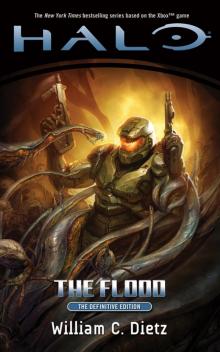 Halo: The Flood
Halo: The Flood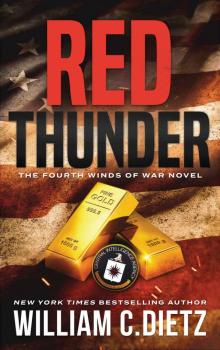 Red Thunder (Winds of War Book 4)
Red Thunder (Winds of War Book 4)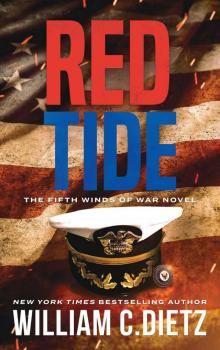 Red Tide
Red Tide Graveyard
Graveyard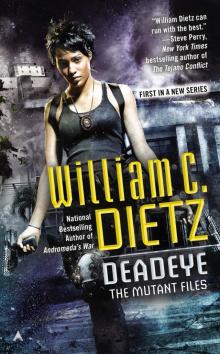 Deadeye
Deadeye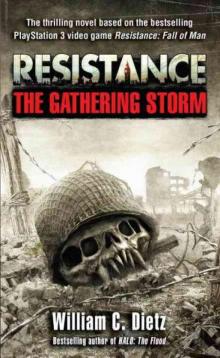 Resistance: The Gathering Storm r-1
Resistance: The Gathering Storm r-1 Legion Of The Damned - 02 - The Final Battle
Legion Of The Damned - 02 - The Final Battle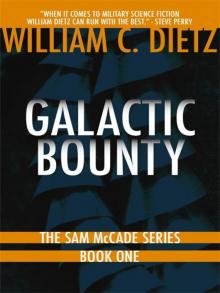 Galactic Bounty
Galactic Bounty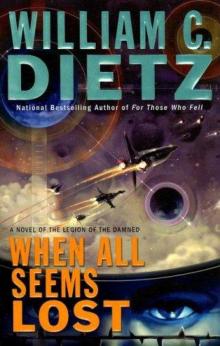 When All Seems Lost
When All Seems Lost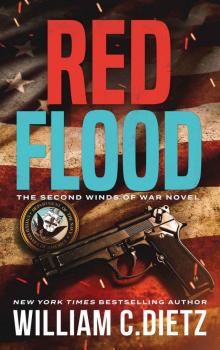 Red Flood (Winds of War Book 2)
Red Flood (Winds of War Book 2)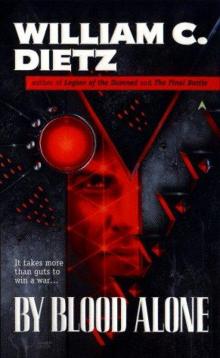 By Blood Alone
By Blood Alone Andromeda's War (Legion of the Damned Book 3)
Andromeda's War (Legion of the Damned Book 3) Hitman: Enemy Within
Hitman: Enemy Within Bodyguard
Bodyguard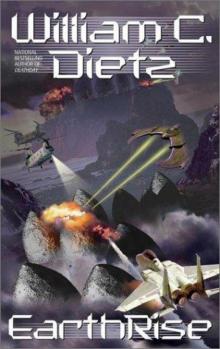 EarthRise
EarthRise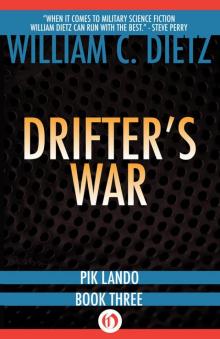 Drifter's War
Drifter's War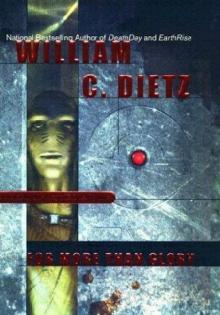 For More Than Glory
For More Than Glory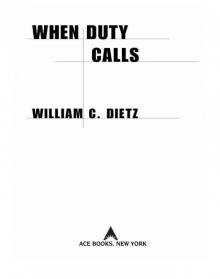 When Duty Calls
When Duty Calls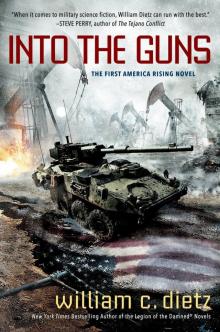 Into the Guns
Into the Guns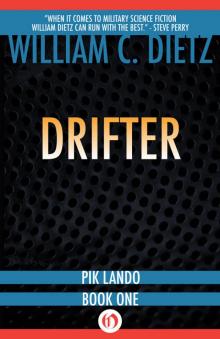 Drifter
Drifter Ejecta
Ejecta When All Seems Los lotd-7
When All Seems Los lotd-7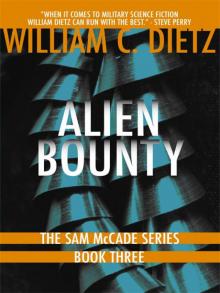 Alien Bounty
Alien Bounty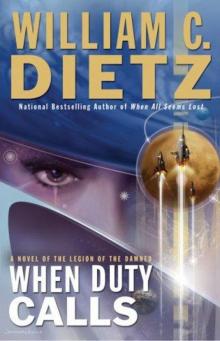 When Duty Calls lotd-8
When Duty Calls lotd-8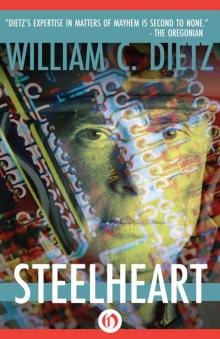 Steelheart
Steelheart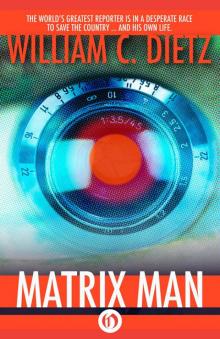 Matrix Man
Matrix Man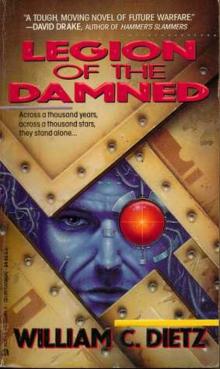 Legion of the Damned
Legion of the Damned Snake Eye
Snake Eye Logos Run
Logos Run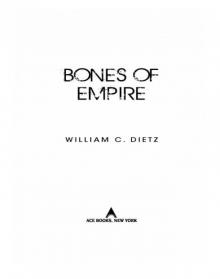 Bones of Empire
Bones of Empire McCade's Bounty
McCade's Bounty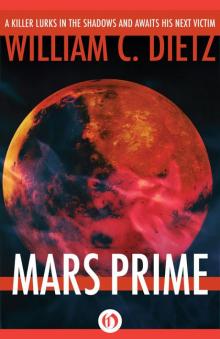 Mars Prime
Mars Prime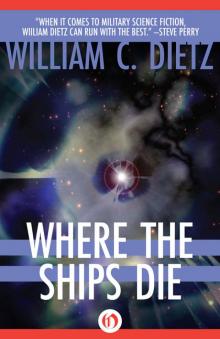 Where the Ships Die
Where the Ships Die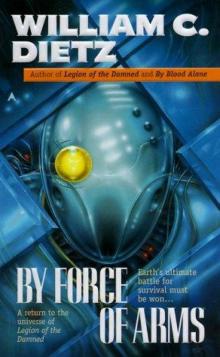 By force of arms lotd-4
By force of arms lotd-4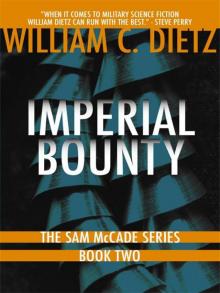 Imperial Bounty
Imperial Bounty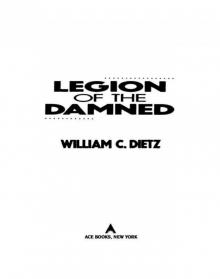 Legion Of The Damned - 01 - Legion of the Damned
Legion Of The Damned - 01 - Legion of the Damned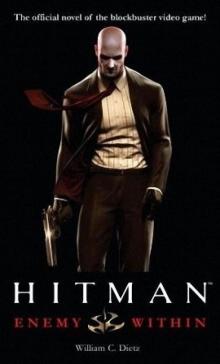 Hitman: Enemy Within h-1
Hitman: Enemy Within h-1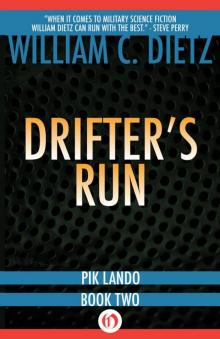 Drifter's Run
Drifter's Run A Fighting Chance
A Fighting Chance McCade on the Run (Sam McCade Omnibus)
McCade on the Run (Sam McCade Omnibus)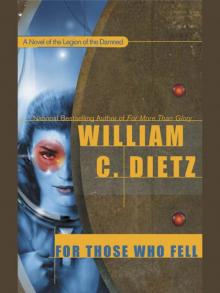 Legion Of The Damned - 06 - For Those Who Fell
Legion Of The Damned - 06 - For Those Who Fell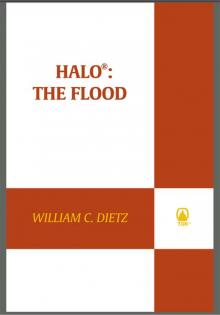 Halo. Flood
Halo. Flood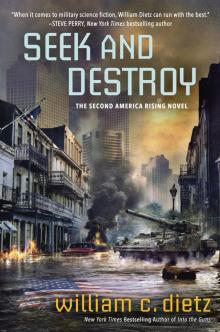 Seek and Destroy
Seek and Destroy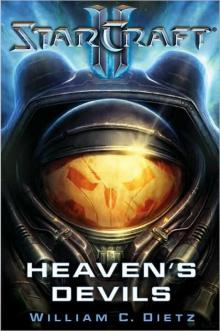 Heaven's Devils si-1
Heaven's Devils si-1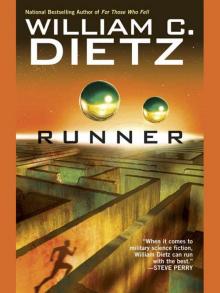 Runner
Runner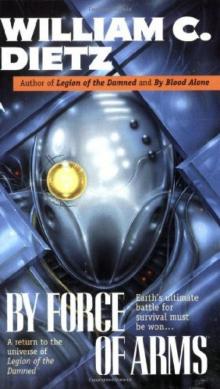 By Force of Arms
By Force of Arms A Hole in the Sky
A Hole in the Sky The Seeds of Man
The Seeds of Man Andromeda's Fall
Andromeda's Fall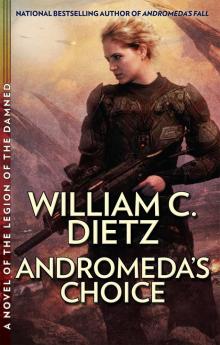 Andromeda’s Choice
Andromeda’s Choice Prison Planet
Prison Planet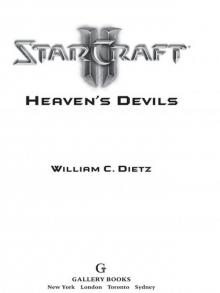 Heaven’s Devils
Heaven’s Devils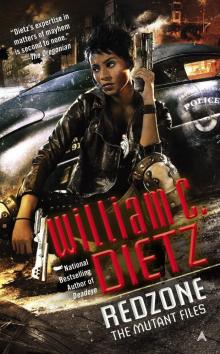 Redzone
Redzone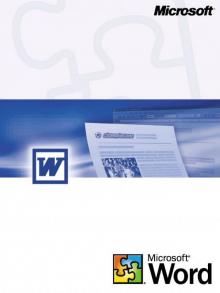 Jedi Knight
Jedi Knight